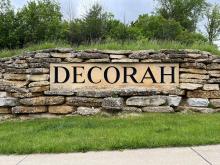By
on

One of the focuses of the recent FiberFete conference is what do communities do once they have built a next-generation network. Lafayette had lots of ideas.
Let's start with counting new jobs. Lafayette Pro Fiber recently discussed one of the employers adding jobs. The post acknowledges that the fiber network is not the sole reason for these particular jobs, but it does play an important role:
You have to know if you've been down to "the egg" at the LITE building that they're not going to put 100 cubicle workers in that facility. No way they'd fit. However they do have to do the tedious work in Louisiana to get those credits. So some large percentage of those 100 workers will have to be off-site. But they'll have to be able to do their work as if they were in the same building with, at a minimum, the 100 megs of connectivity that standard ethernet LANs provide. That, of course, is exactly what LUS provides on its justly acclaimed 100 meg intranet. A person setting behind a nice workstation setup on Moss Avenue with a nice VLAN setup could work within the Pixel Magic network as if they were just down the hall from the boss's glossy corner office (something both would probably prefer). The ultimate in working from home. I'll not be surprised if Pixel Magic opts for an offsite work center like NuConn did—but there too LUS' fiber-to-every-nook-and-cranny make it possible to shop for the cheapest appropriate location rather than the cheapest location that has something close to real connectivity. In that sort of situation it would be easy and damned inexpensive to leverage LUS Fiber to provide a gig or several of commercial grade connection between the two points.This is only one of several employers who have added many jobs in Lafayette because of the publicly owned fiber network. Another avenue Lafayette is exploring is high-bandwidth classrooms. They have created a specific FiberKids program (which was discussed at FiberFete).
The project is intended to test live streaming, high-definition capabilities for school conferences, lectures and field trips. Students are encouraged to explore the uses of fiber-optic technology in the classroom. On March 20, the FiberKids project was recognized by the Corporation for Public Broadcasting with its My Source Education Innovation award in Washington, D.C.Finally, networks need more subscribers and this typically requires good marketing campaigns. Lafayette has launched a "Refer a friend" program. $50 bucks for you and a friend when a subscriber refers a friend to the network. As I previously mentioned, the very nature of Lafayette's LUS Fiber network encourages subscribers to evangelize the network to others. Because everyone on the LUS Fiber network can connect to others on the network at 100Mbps (regardless of what tier one pays to connect to the Internet), subscribers will want colleagues and friends on the network to share files or do extremely high quality video chats.







